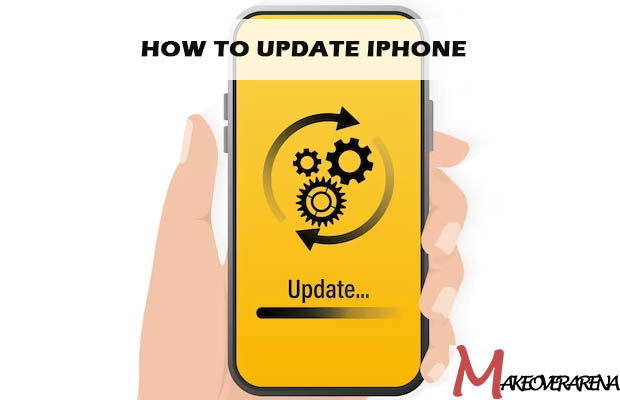Updating your iPhone – keeping your iPhone’s software up-to-date is not just a matter of staying current with the latest features; it’s also important for security, performance, and compatibility with newer apps. Regular updates from Apple bring enhancements, bug fixes, and overall improvements to your device.

If you’re unsure about the update process or are new to the iPhone ecosystem, fear not! This guide will walk you through the steps of updating your iPhone, ensuring that you can make the most of the latest advancements while safeguarding your device.
Even if you are using the latest iPhone model or an older version, the update process remains relatively consistent. So, grab your iPhone, connect to Wi-Fi, and let’s dive into the simple yet essential steps to keep your device running smoothly.
What You First Need to Know
Every time a new version of iOS, which is the operating system powering your iPhone, is released, it comes with fresh features, fixes for bugs, and tweaks to enhance how your phone functions and is operated. These updates can be easily installed without the need for any cables – a process referred to as over-the-air, or OTA, updating.
Now that you know this, let’s proceed to the steps on how to update your iPhone.
How to Update IOS Wirelessly on the iPhone
Before Updating:
-
Back up Your Data:
Before diving into the update, safeguard your data by creating a backup using iCloud or iTunes. This precaution ensures that if anything goes awry during the upgrade, your information can be restored.
-
Connect to Wi-Fi:
To streamline the process, connect your iPhone to a Wi-Fi network. Although updates can be downloaded using cellular data, they tend to be sizable (often 1GB or more), potentially consuming a significant amount of your monthly data and time. Wi-Fi is a more convenient and faster option.
-
Charge Your Battery:
Ensure your iPhone has ample battery life before initiating the update. The download and installation process can be time-consuming. If your battery level is below 50 per cent, it’s advisable to charge your device before proceeding.
Updating iOS:
- Navigate to the Settings app on your iPhone’s Home screen.
- Scroll down and tap on “General.”
- Look for and tap on “Software Update.” Your device will check for available updates and provide details on what each update includes.
- Once you’re ready, tap “Download and Install” to kickstart the installation of the iPhone software update.
- If your phone is secured with a passcode, enter it to initiate the download. A blue progress bar will indicate the download’s status.
- After the download completes, tap “Install Now.” The screen will go dark, display the Apple logo, and show a progress bar indicating the update’s installation status.
- Once the iOS update is finished, your iPhone will restart, and a completion notice will be displayed.
These instructions apply not only to iPhones but also to iPod touch and iPad devices, as they all run on iOS.
Tips for iOS Upgrade
Your iPhone keeps you informed about available updates, even if you don’t actively check for them. A red “1” icon on the Settings app located on your home screen signals that an iOS update is ready for installation. Additionally, you may receive a push notification drawing your attention to the available update.
Insufficient Storage Space
In case your device lacks adequate storage space for the update, discover how to proceed with updating your iPhone when storage is tight. Follow helpful tips to address and resolve this storage challenge.
Addressing Installation Issues
Encountering problems during the installation? Don’t worry, there are two potential solutions:
- Recovery Mode:
If needed, utilize Recovery Mode to troubleshoot and recover from installation issues.
- DFU Mode (Device Firmware Update):
In more severe cases, DFU Mode can be employed as a last resort to address installation problems.
Failed Upgrade Scenarios
A failed upgrade might result in a daunting “white screen of death.” Should you encounter error 3194, there are troubleshooting steps you can take to overcome this specific issue.
Stay informed, and in case of any hiccups during the update process, these options provide a pathway to resolving potential challenges and ensuring a successful iOS update.
CHECK THESE OUT:



